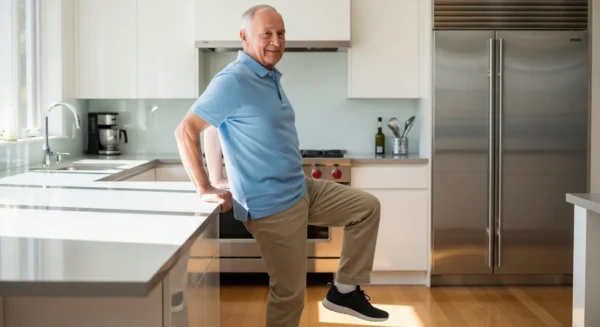
Actionable Strategies and Money-Saving Tips
Selling your home can feel overwhelming. By breaking it down into manageable steps, you can approach the process with confidence and clarity. Here are our top real estate tips for seniors preparing to sell.
Step 1: Get Clear on Your Goals and Timing
Before any practical work begins, start with the “why.” Why are you selling? Are you looking for a smaller property with less maintenance, a single-story home to avoid stairs, or to move closer to family? Defining your goal will guide all subsequent decisions. Consider the financial impact as well. Will the proceeds from the sale need to fund your living expenses, or will they be used to purchase your next home? A clear financial plan is your best first step.
Timing the market is difficult, but timing your sale for the right season can help. Spring (March to May) is traditionally the busiest and most competitive season for home sales, often resulting in higher prices. However, selling in the fall can also be effective, as buyers at that time are often more serious. Avoid selling during the holiday season if possible, as activity tends to slow down.
Step 2: The Three “D’s” – Declutter, Depersonalize, and Deep Clean
After living in a home for many years, it is natural to accumulate a lifetime of belongings. For potential buyers, however, this can feel like clutter. Your goal is to help buyers envision themselves living in the space. This is where home staging principles come into play.
- Declutter: This is the most challenging but most important task. Go through every room, closet, and cabinet. Sort items into four categories: Keep, Donate, Sell, and Discard. This process can be emotional, so give yourself plenty of time. Renting a small storage unit for excess furniture or boxes can make your home feel much larger and more open.
- Depersonalize: Buyers need to see the house, not your life story. Pack away family photos, personal collections, and bold, taste-specific artwork. This creates a neutral canvas that allows buyers to project their own lives onto the home.
- Deep Clean: A sparkling clean home signals to buyers that the property has been well-maintained. Clean everything from the baseboards to the ceiling fans. Pay special attention to kitchens and bathrooms. Consider hiring a professional cleaning service for a one-time deep clean; it is often money well spent.
Step 3: Make Smart Repairs, Not Costly Renovations
One of the biggest mistakes sellers make is over-investing in major renovations right before a sale. You are unlikely to recoup the full cost of a $50,000 kitchen remodel. Instead, focus on small, high-impact repairs and cosmetic updates.
Focus on these areas:
- Fix the Obvious: Repair leaky faucets, replace cracked tiles, fix sticky doors, and replace burned-out lightbulbs. These small issues can make buyers think the home has been neglected.
- Fresh Paint: A fresh coat of neutral-colored paint (think light gray, beige, or off-white) is one of the cheapest and most effective ways to make a home look clean, bright, and updated.
- Curb Appeal: The first impression is critical. Mow the lawn, trim overgrown shrubs, plant some fresh flowers, and paint the front door. A welcoming exterior invites buyers inside.
Step 4: Find a Real Estate Agent Who Understands Your Needs
A good real estate agent is your most valuable partner in this process. Do not just go with the first person you meet. Interview at least three agents. Look for someone who is not only experienced in your local market but also has experience working with seniors.
Consider looking for an agent with a Seniors Real Estate Specialist (SRES) designation. These agents have received special training on the financial and emotional challenges that senior clients face when selling a long-term home. They can be a fantastic resource for connecting you with other professionals, from movers to estate planners.
Ask potential agents for a comparative market analysis (CMA) to see what similar homes in your area have sold for recently. This will help you understand a realistic price range for your property. A good agent will be honest about your home’s value, not just tell you a high number to get your listing.
Step 5: Price It Right and Prepare for Showings
Pricing your home correctly from the start is crucial. Overpricing can cause your home to sit on the market for months, creating a stigma that something is wrong with it. Your agent’s CMA will be your guide. Trust the data, not your emotional attachment to the home.
Once your home is listed, you need to be prepared for showings. This can be disruptive, so have a plan. Keep the house tidy at all times. Have a place you can go during showings, like a coffee shop, library, or a friend’s house. It is best if you are not present when potential buyers tour the home, as it allows them to speak freely and feel more comfortable.















